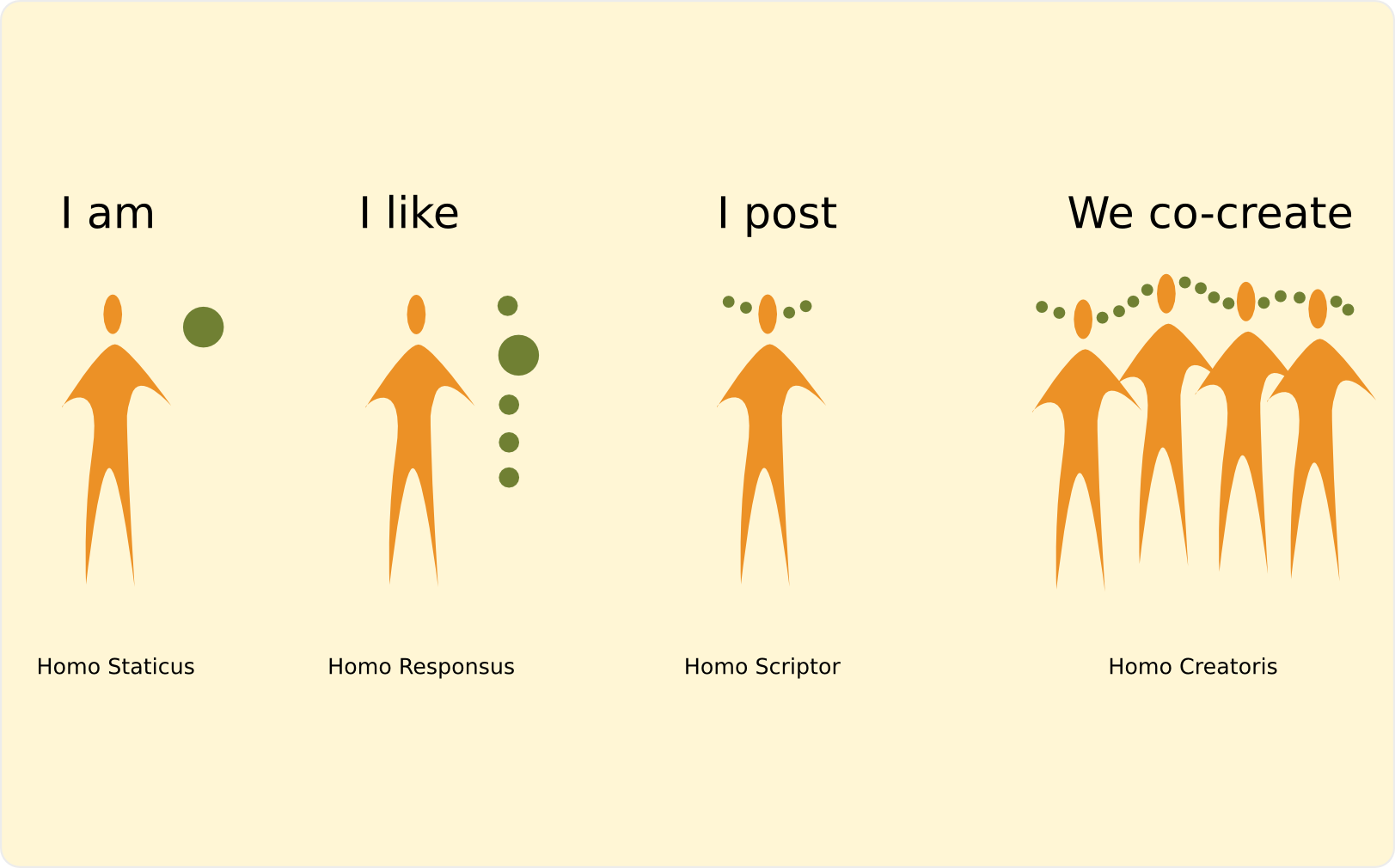The four stages of social
Homo Staticus
The web as we now know it burst first into the open in the early nineties. It certainly did not start among the more socially active classes. It was an invention by and for nerdy CERN physicists, to exchange data about elementary particle experiments. But it wasn’t long before academics figured out additional valuable uses of this technology: You could put your face online, along with a CV. This is how “personal” webpages came to life. Those early home pages were mostly dour affairs, replete with long publication lists.
Unfortunately, the bigger masses of corporate folk did not have the luxury of this public presence - except maybe as examples of interesting co-workers during corporate recruitment drives. At some point Linkedin sensed the plight of this great under-served constituency and made it their business to fulfil the universal need for a virtual presence. Thus was born Homo Staticus - a man with an online profile.
Today we know that Homo Staticus exists, given the millions of LinkedIn profiles, but we know precious little about him because he doesn’t actually do much online. Sometimes he even forgets he’s got a profile and people congratulate him for job anniversaries in positions he no longer holds.
But the great social river did not stand still!
Homo Responsus
After some years of delay, college students finally got wind of the powerful instrument of self promotion that their professors were monopolizing. Facebook got started as a collection of college student faces in an online book. The difference with the prior static homepage versions was that all texts were in a database. Suddenly data entry and submission to databases, the very definition of corporate boredom, became very sexy. It became clear, in particular, that students would manically click on like form buttons to indicate unambiguously who is in, and by exclusion, who is out from their database circle.
Other social networks followed suit and Homo Responsus developed into an avid clicker. That does not mean she is unaware of the social context and its implications. Au contraire. She knows that what you like defines who you are and carries potential counterparty risk. That is, somebody in your network may get the wrong impression about you if you like something inappropriate. This universal need to mitigate counterparty impression risk gave rise to the hunt for good collateral. Alas,
there is a real shortage of high quality content that is universally likeable
This shortage of AAA content gave rise to the synthetic Richard Branson phenomenon. This is a benign virtual entity, designed explicitly to utter the most likable sentences so that nobody can possibly disagree with you liking them. Some deceased, but otherwise nice, people like Albert Einstein have also been summoned to this worthwhile cause.
In the meantime, in other parts of the ecosystem, social evolution would take further powerful steps.
Homo Scriptor
Some people do not worry about alienating a fraction of their audience if that would strengthen their following with another part. They have opinions and they feel a strong need to let others know of their opinions. Such people are not the majority, but they are numerous enough to require a specially designed database that allows for upload and retrieval of longish pieces of text. This was dully provided in the form of WordPress. Which brought us to the dawn of Homo Scriptor - a man with a blog.
The barriers to publishing are now demolished. While it is still the case that push media are the best friend of an average author, any really interesting writter has the world and Google on his/her side. It is a remarkable new state of affairs. But it gets better.
Homo Creatoris
People always created things in groups of varying sizes. Now those groups can span the globe in virtual community networks that interact using more sophisticated databases like Wikipedia or Github. The interaction in these types of social networks is qualitatively different than anything we have seen before.
- For starters, it requires more quality time. To contribute knowledge towards an article or to build a piece of open source code you must move beyond chatter and into real stuff. But millions of people around the world do contribute this quality time!
- It is still just a database in the backend, but the database schema is now dynamic, the content starts having evolving semantics. Remember that early geek inventor of the web at CERN? Guess what he is busy advocating these days.
- The social network interface as well, shifts to facilitate peer review, debate and even conflict. Stackoverflow, a social collaboration site for programmers allows down-voting, that is disliking. The financial analogy is that Linkedin is a long-only market, whereas Stackoverflow allows short selling. Guess which version is more bubble prone.
Do you feel like getting into the next stage of social? Financial services are not an early adopter of social network technologies as the future seems inflicted rather than being sought after by the industry. Yet the impact on many areas of the industry, including in particular risk management, can only be expected to be extremely positive as it enables widespread adoption and improvement of good practices.
Open Risk has great facilities to help like-minded people join in this journey of exploration of this promising new technology:
- The Risk Manual is a semantic mediawiki for developing an open risk manual, a free knowledge base by risk managers for risk managers
- The Open Source Risk Models repository has already some brave early adopters contributing towards a widely accessible library of risk and portfolio management models
